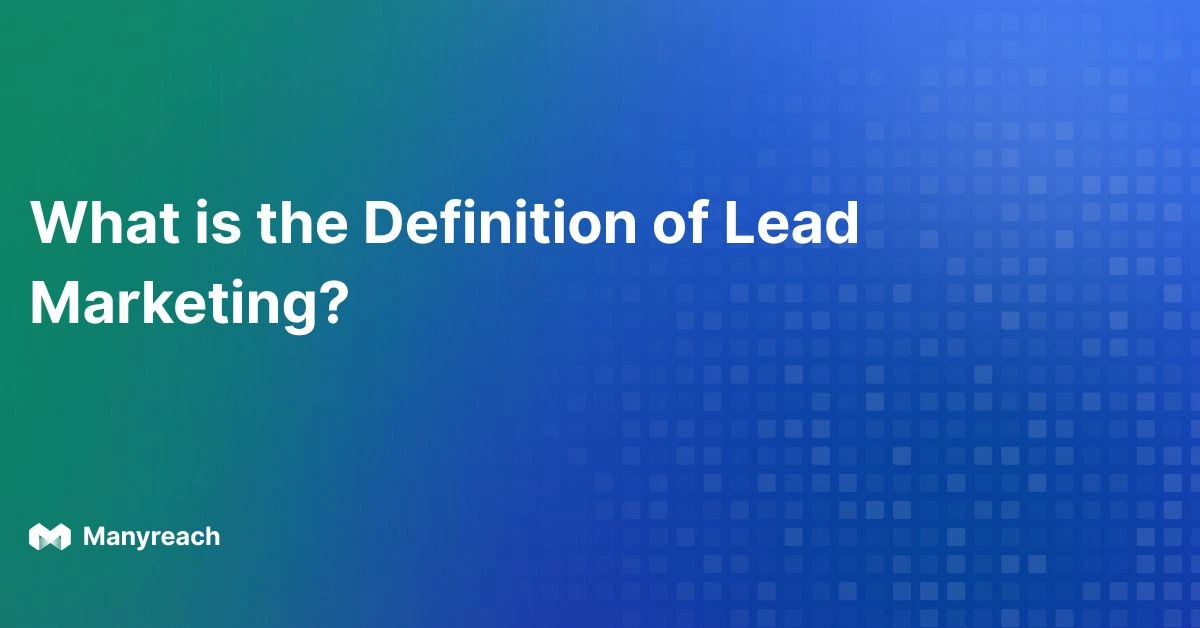Top Ways to Measure Cold Email Conversion Rate in 2025
.webp)
Cold emails help you reach new prospects, but just sending them isn’t enough. You need to know if they’re working.
The best way to check that is by measuring your cold email conversion rate. This tells you how many people did what you wanted, like booking a meeting or signing up.
The formula is simple:
Conversion Rate (%) = (Number of Conversions / Number of Emails Sent) × 100
In this blog, I will help you learn what counts as a conversion, which metrics to track, and how to improve your results.
Let’s get started.
What Is Cold Email Conversion Rate?
The cold email conversion rate is the percentage of recipients who complete a specific action that you desire.
It can be booking a meeting, signing up for a free trial, downloading an asset, or making a purchase.
It’s often confused with open or click-through rates, but conversion refers only to those who take the final step you’re aiming for.
Cold Email Conversion Rate Formula (2025):
Conversion Rate (%) = ( Number of Cold Email Conversion / Number of cold emails sent) × 100
For Example:
- Emails Sent: 1,000
- Replies Booked to Meetings (Conversions): 45
Conversion Rate = (45 / 1000) × 100 = 4.5%
What Counts as a “Conversion” in 2025?
Depending on your goal, a conversion could mean:
- A positive reply
- A meeting booked
- A demo completed
- A sale made

Why Does Cold Email Conversion Matter?
High conversion rates mean your outreach isn’t just being seen or clicked, it’s actually working. Your value proposition is hitting the mark, your CTA is clear, and your emails are landing at just the right moment.
Improving this rate doesn’t just make your dashboard look better; it trims down customer acquisition costs and speeds up your sales cycle.
Key Metrics to Monitor Cold Email Conversion Rate
If you really want to monitor your cold email’s performance with the audience, CTR, response rates, and conversion rates are the metrics you must focus on. Want to know about them in detail? Here you go:
Open Rate
This is your foot in the door. A low open rate often screams that your subject line is off, your sender reputation is shaky, or you’re hitting inboxes at the wrong time. A/B testing subject lines and warming up your domain can help fix that.
Click-Through Rate (CTR)
CTR tells you whether people are intrigued enough to engage. It’s not a promise of conversion, but it’s a good sign your content caught their eye. Keep your email focused on one solid CTA to drive up clicks.
Response Rate
Responses aren’t conversions, but they’re valuable. Whether it’s a question, a “not now,” or a referral to someone else, a reply gives you a human touchpoint.
Conversion Rate
The percentage of people who took the action you were aiming for, clicked the meeting link, signed up, bought the product. This is what drives revenue.
Industry Benchmarks For Cold Email Conversion Rates
Conversion rates vary wildly by industry and audience. The average cold email average conversion rate is around 0.03% to 0.06%.
If that seems low, remember you’re fishing in cold waters. More specialized sectors like finance or logistics might hit 0.2% or more, especially with hyper-targeted outreach.
Instead of comparing with global averages, focus on your own historical performance. Know your numbers, then aim to beat them.
Strategies to Improve Conversion Rates
Let’s assume that your email conversion data can get better.
But how are you going to improve the conversion rates? You can improve that with proper strategies. According to the latest cold email statistics, these strategies have given significant results to businesses.
Take a look:
Personalization
Nobody likes getting a generic, mass email. So to make your cold emails feel personal, you can use spintags and variables. These are placeholders that get replaced with real information when the email is sent.
For example, instead of writing:
Hi there, I wanted to share something with you…
Use Spintags:
Hi {{first_name}}, I saw that {{company}} recently {{recent_event}}. Thought this might help…
So:
{{first_name}} → becomes “John”
{{company}} → becomes “XYZ Corp”
{{job_title}} → becomes “Marketing Manager”
{{recent_event}} → becomes “your new product launch”
Concise, Focused Email Copy
You’ve got about eight seconds before your reader moves on. Keep it tight—around 75 to 125 words or shorter. Don’t add five links and three CTAs in one email. Stick to one core idea: What’s the pain point? How do you solve it? Why now? Short paragraphs. Clear language. No fluff.
An effective Call-to-Action
A low-pressure CTA is always more effective than just a “let me know.” Use something like:
“Would you like to know more about [Your Company]. If yes, just respond Y, I will book a quick 15-minute call next week.”
Follow-Up Emails
Most replies come from the second or third email, not the first. Set up a follow-up email sequence over 7–10 days. Each follow-up should add something like a testimonial, insight, or value.
Importance of Subject Line
Contrary to what people think, subject lines don’t matter as much as you think.
They just need to make your email look like a regular, manually-sent, low-effort email from a colleague/friend.
Here’s what works best for subject lines:
- Keep it short, under four words
- Don’t use capital letters on every word
- Start with lowercase letters like “question” instead of “Question”
- Make it clear but not too detailed, so the reader wants to open it
- Don’t use the person’s name or company name—it can look like a mass email
Here are some real subject lines that got replies:
- quick question
- worth a look?
- saw this on your site
- (just leave it blank)
- whitelabel
- {result} in {time frame}
- idea for you
- this might help
- got a second?
These subject lines work because they look simple and natural, like something you’d send to a coworker or friend.
Measuring ROI of Cold Email Campaigns
Knowing your ROI tells you if your effort is actually paying off. Here's the basic formula:
ROI = (Revenue Generated - Campaign Costs) / Campaign Costs x 100
So if you dropped $1,200 on a campaign that pulled in $7,200 worth of deals, that’s a 500% ROI.
Not too shabby.
Track every dollar, hour, and click. This helps you figure out which campaigns to double down on—and which to quietly retire.
Factors Influencing Cold Email ROI
Quality of Lead List
If you’re emailing the wrong people, even your best-crafted pitch will flop. Build lists based on intent signals, job roles, and relevant industries. Bad targeting = bad results.
Email Deliverability
If your emails don’t land in the inbox, nothing else matters. So, set up SPF, DKIM, and DMARC, and warm up new addresses. Tools like Manyreach make this super easy.
It helps you to automate warmups and monitor deliverability from day one. Just plug-in and you’re good to go!
And don’t forget to clean your email list regularly to avoid the spam folder that could trigger filters.
Timing
A good time to start sending your cold emails is around:
Early Morning: 6 AM to 9 AM
Late Morning: 10 AM to 12 PM
Early afternoon: 1 PM to 3 PM
These are often the best times when people are settled into work but not yet overwhelmed
Email Infrastructure
Use a proper business email address. Free ones like Gmail? Red flag. Use a sending platform like Manyreach that can handle volume, automate follow-ups, and track performance.
Content Relevance
Different people care about different things. A CTO might care about security, scalability, or how your product fits with their existing systems. A marketing director, on the other hand, might care more about lead generation, conversion rates, or campaign performance.
That’s why you shouldn’t send the same email to everyone.
Split your email list based on job roles or departments. Then create your draft to match what each group cares about. Also, keep it specific and relevant to their work. When people see that the email speaks directly to their needs, they’re more likely to reply.

Frequently Asked Questions
Q1: What is a good cold email conversion rate?
Anywhere between 0.1% to 0.2% is solid. If you're cracking 0.3%, you're doing better than most.
Q2: How many follow-ups should I send?
Two or three is the sweet spot. Most responses come after follow-up #2. After that, only keep going if you’re adding value.
Q3: Is personalization really worth the effort?
Personalization is a must! It’s what separates thoughtful outreach from digital junk mail.
Q4: How do I stay out of the spam folder?
Authenticate your domain, avoid spammy language, and send to clean, verified lists. Keep your bounce rate in check.
Q5: Do I need a CTA in every email?
Yes, even a soft one. “Would it make sense to connect?” is better than leaving your reader guessing.
Conclusion
Cold email isn’t dead, it’s just competitive. The difference between not getting a response and getting one often comes down to strategy, timing, and execution. Nail the fundamentals: clean list, tailored message, compelling CTA, smart follow-ups. Then use a tool like Manyreach to scale it without losing your edge. Up your conversion game, and your pipeline and revenue will thank you.
.webp)






